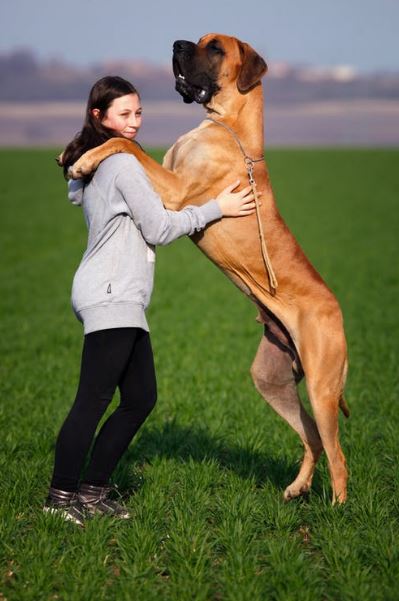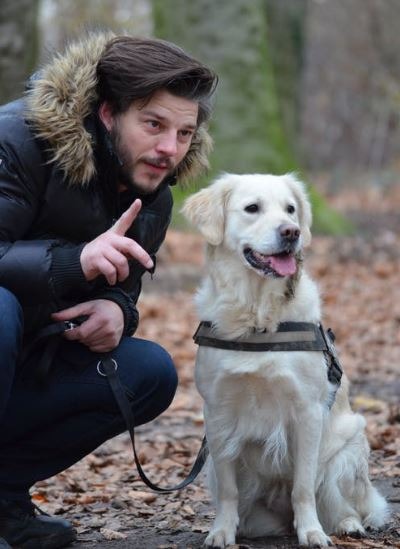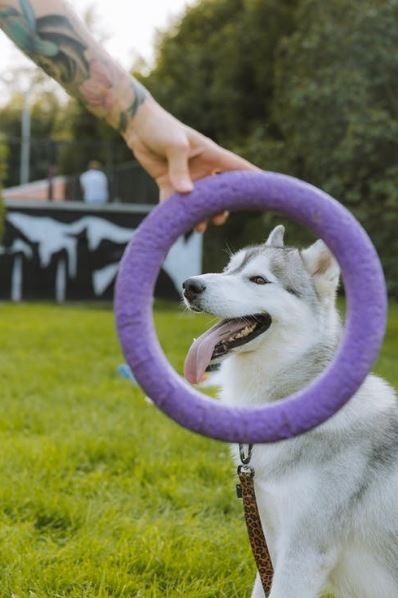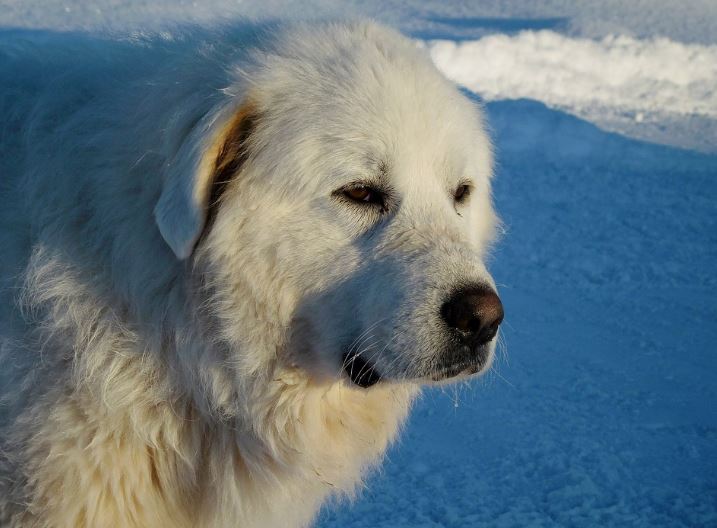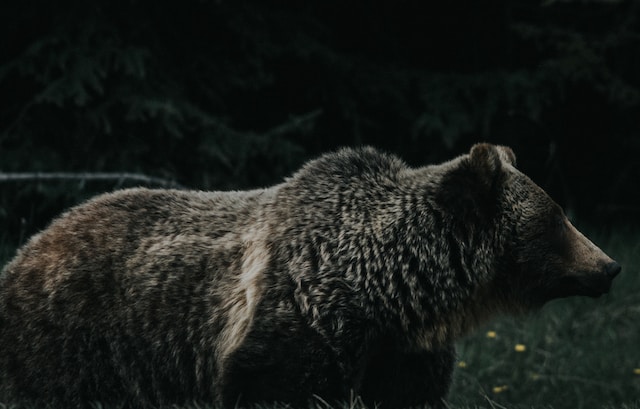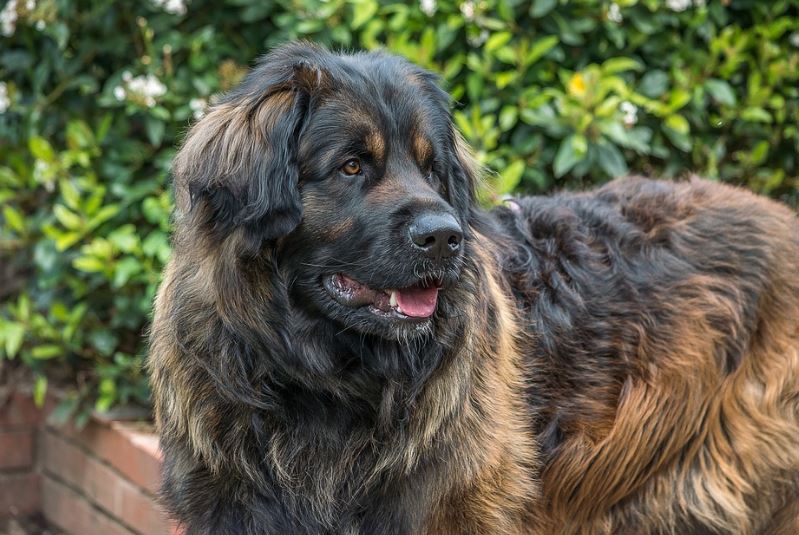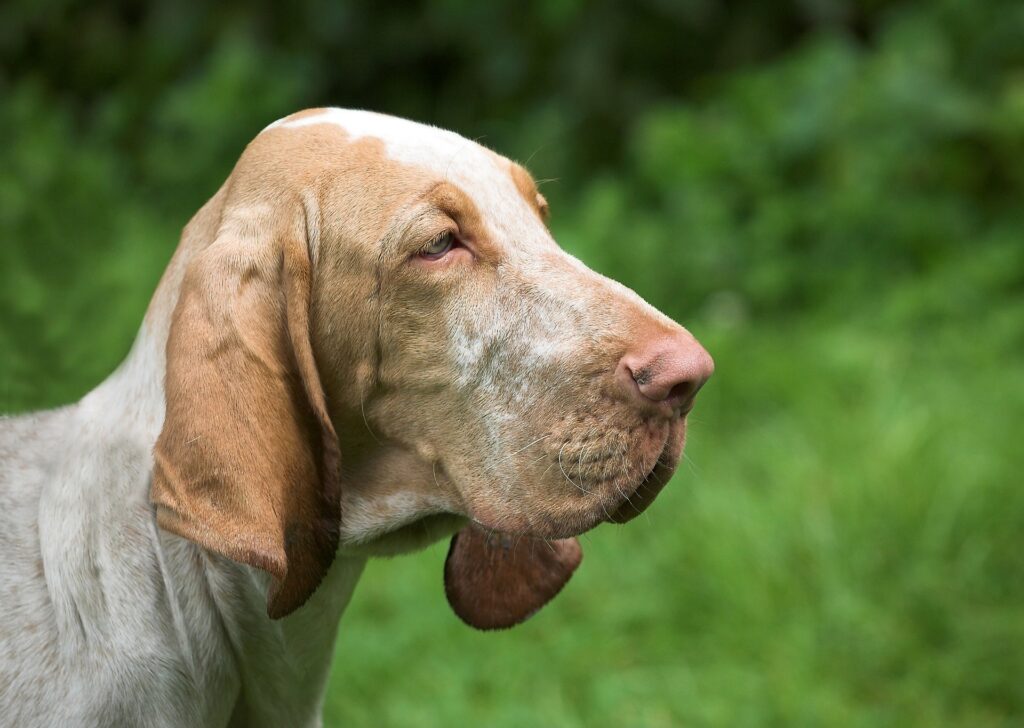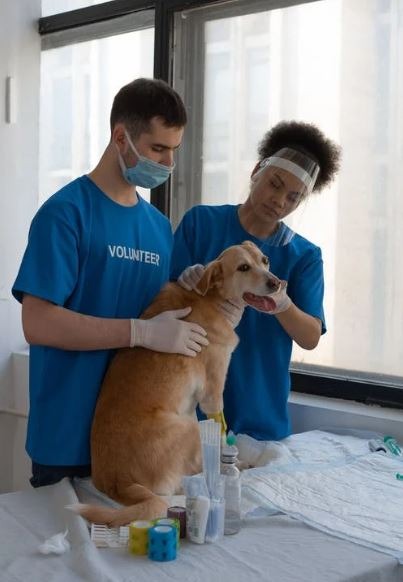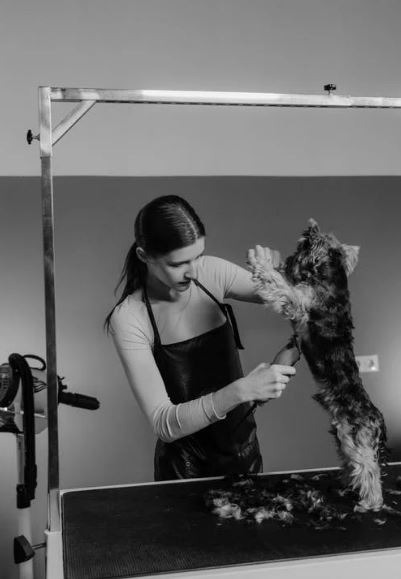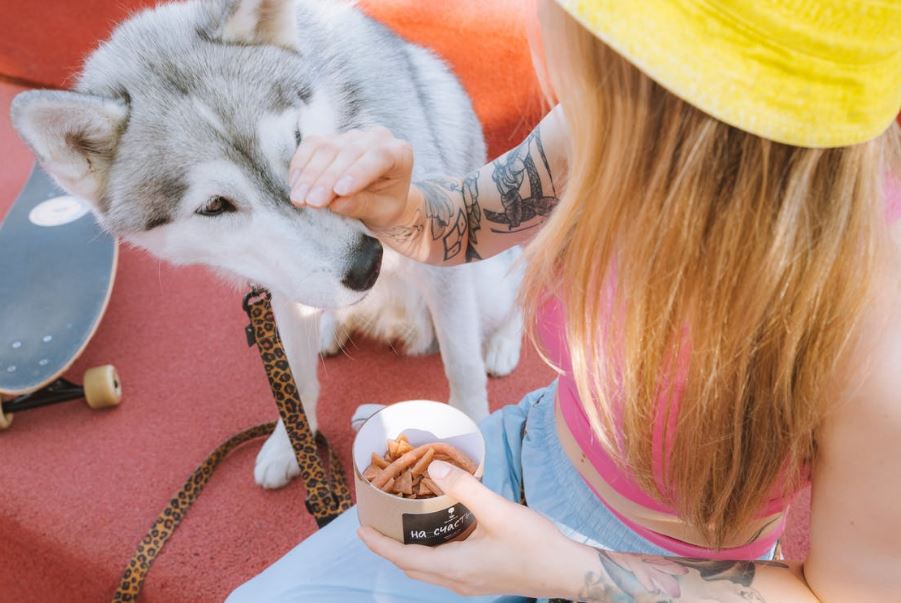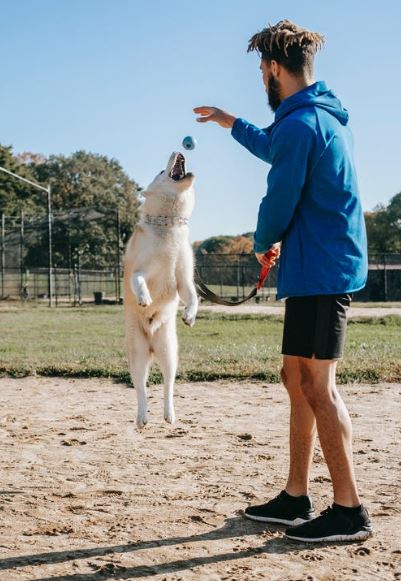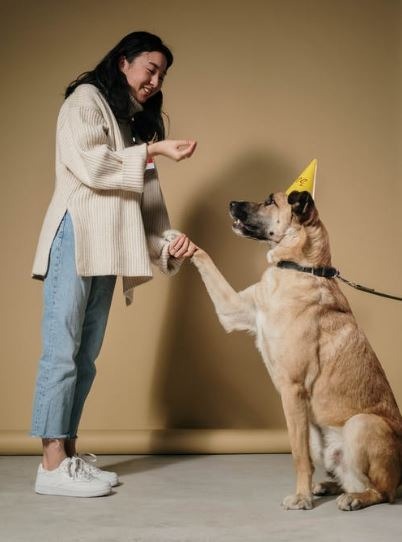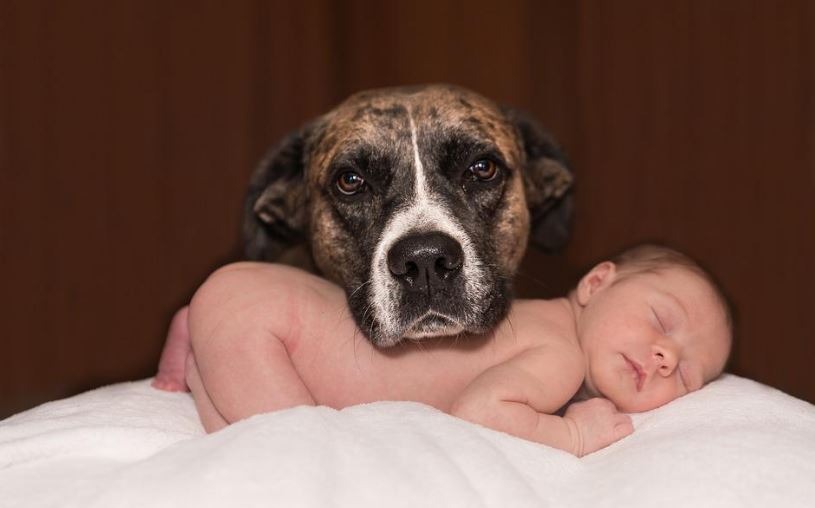It’s hard to deny the joy and companionship that a colossal dog can provide. Big dogs come in all shapes and sizes, from cuddly to crazy. Having a dog as a pet may be a wonderful experience for you and your dog. Large breed dogs, however, need a little extra care to ensure a long and healthy life. Many people fail to consider the additional responsibilities of owning a large dog breed. Having a large dog entails significant responsibility! Every type of dog has its requirements, and giant dogs are no exception. Everything you need to know about caring for a big canine, from food to extra-large dog beds, will be laid out in this guide.
The Pros and Cons of Having a Big Dog
Having a big dog offers an extra pound of fun. Big dogs are usually calmer and more relaxed than small ones. They’re also excellent with youngsters, soft, and patient. Large canines are more intelligent, easier to train, and more eager to please. Big dogs are less aggressive when seeking attention or food than little ones. Another good thing about having a large dog is that they make superb watchdogs and security dogs because of their frightening size. Not to mention, many giant dog breeds are bold, courageous, and devoted to their owners. And the best rewarding thing about having a giant dog is that you’ll always have a walking partner. They adore exercising and are pretty resilient.
However, the downsides of owning a huge dog are evident. The larger the dog, the higher the maintenance cost. A huge dog eats more food, has higher medical expenditures, needs more space, and needs a backyard. Large dog breeds are also scary; they tend to scare people; thus, they’re not always welcome. Sadly, big dogs are prone to health problems, especially hip, and elbow dysplasia. And also, the life expectancy of large dogs is lower. Big dog ownership is likely to be brief. The lifespans of large dog breeds are lower than those of small dog breeds because they age more rapidly.
You can also check out Canine By Design Training programs for more great options.
Top Seven Best Big Dog Choice
1. Neapolitan Mastiff
Neapolitan Mastiff is a good guard dog and an excellent family pet. Neapolitans were Roman army dogs. Today, Neapolitan Mastiffs are commonly guard dogs and pets. They are beautiful, devoted, protective dogs. They’re a great and devoted family pets, but they must be socialized and trained to obey in order to control their excessive guarding. It’s essential to introduce a mastiff to as many unfamiliar people, places, and circumstances as possible, especially when it’s still a puppy.
The mastiff is a noble yet friendly animal. Because of his peaceful disposition and love for his family, he is a terrific playmate for older kids. However, due to its enormous size, the breed is not suggested for toddlers.
When guests arrive at the house, his guard dog instincts are likely to show. He has a tendency to be wary of strangers while safeguarding his family and perceived territory. The mastiff does not bark very much, though.
Neapolitan Mastiff’s are large, strong, and muscular. With a short muzzle, hanging cheeks, and a black mask covering the eyes and nostrils, its head is massive and square. Small and dark hazel or brown in tone, the eyes are tiny. The small, dark-colored ears drop downward. The tail is long, reaches the dog’s hocks, and is high on the rump. The mastiff has a short, straight, coarse coat. Fawn, apricot, and brindle are his coat’s hues.
2. The great Pyrenees
Great Pyrenees suits active, outgoing people. The Great Pyrenees is an ancient breed. They’ve defended homes and sheep for ages.
The Great Pyrenees was bred by farmers in the Pyrenees Mountains of Europe, which form the boundary between France and Spain, as a livestock guard dog. These farmers raised both the larger Pyrenean Shepherds and the smaller Great Pyrenees; the latter was in charge of herding, whereas the former was in charge of guarding the flock against wolves and bears.
Around the year 3,000 B.C., the Great Pyrenees and their shepherds probably arrived in the Pyrenean Mountains. Their fossils dating from between 1800 and 1000 B.C. have been discovered in the region. Scientists believe that the breed may have descended from white mountain dogs as long as 11,000 years ago, when they first appeared in Asia Minor.
A Great Pyrenees is more than just a watchdog. He is a protector. Members of the flock are guarded by the Pyrenees, who also provides for and nurtures them. He has a natural tendency to be nice and patient with all weak animals.
This breed was the pet dog of small-scale livestock farmers for thousands of years. Yet, he became more well-liked during the Renaissance among the French nobles and royals. The Château fort de Lordes, a castle in southwest France, was reportedly guarded by the “Big Hounds of the Mountains“, according to French literature from 1407. The Great Pyrenees was designated as France’s Royal Dog by King Louis XIV’s court in 1675.
The great Pyrenees are calm, gentle, and kid-friendly but alert and ready to protect their family. They weigh 85 pounds, are 25-32 inches tall, and live 10-12 years.
3. Newfoundland
This breed originated on the Newfoundland island and is a superb swimmer with a track record of amazing water rescues. Although its precise ancestors are uncertain, this breed may be connected to the Pyrenean mountain dogs that accompanied local fishermen. The Newfoundland was introduced to Britain and France in the 18th century and immediately gained popularity among English sailors as a ship dog.
Two Newfoundland dogs were a necessary component as the “equipment” on lifeguard stations along the English coast since the breed’s reputation for performing water rescues caused it to become so well-known.
They are known to be friendly equally at home on land as it is in the water. The dog is an excellent pet for a single person or a small family, but the Newfoundland’s size should be taken into consideration. Although the adult Newfoundland does not need a lot of activity, it is very easy to become a couch potato. He should be allowed to go for daily strolls, yard runs, and preferably swimming to stay in shape. The already brief life span of a Newfoundland, which is typically 8 to 10 years, might be shortened by gaining extra weight.
Look no further if you want a giant dog who’s good with kids and a good security dog. They’re compassionate and affectionate towards kids. Their innate impulse is to help and defend humans. Newfoundland’s are a great family and guard dogs.
4. Leonbergers
In 1846, the Leonberger made its first appearance in Leonberg, Germany as a result to Herr Heinrich Essig’s attempt to make a canine representation of the lion that appears on the Leonberg’s coat of arms.
The breed was on the verge of extinction during World War I, wherein, only 5 of the 25 Leonbergers were good enough for breeding. Stadelmann and Josenhans, two Leonberger enthusiasts, started a group dedicated to preserving the breed. The Deutsche Club fur Leonberger Hunde resumed the breeding program after the war, which the German government had taken over at that time.
Although they are quiet and peaceful dogs, Leonbergers are not sluggish. They prefer to remain with their guardians and do not make ideal kennel dogs. They need more exercise than just a walk because they are energetic dogs outside. Additionally, although they are very clever and trainable, Leonbergers may display stubbornness. Although they are not known to be violent towards people, as they become older, they do start to be wary of strangers.
If you want to own a Leonberger, there’s a list of unique German dog names you can choose.
The Leonberger has a rich undercoat and a coat that can be straight or wavy. It has a medium-soft to coarse feel. He has lion-like coloring that ranges from golden-yellow to red-brown. He typically wears a mask-like print that is dark or black. A huge dog with golden yellow fur and black spots on the muzzle and ears was what he bred.
Leonbergers are terrific family dogs with emotional insight. One of the most lovable dogs, Leonbergers, makes ideal therapy or family dogs because they are empathetic and friendly. It lives 7 to 10 years, weighs 170 pounds, and is 32 inches tall.
5. Great Dane
The Great Dane is a large breed of dog, commonly referred to as the “Apollo of dogs”. The Dane is not Danish; rather, he is German. It is estimated that this type of breed has existed for more than 400 years. Great Danes are descended from canines that resembled mastiffs, that German aristocrats trained to guard country estates and hunt wild boar.
Great Danes served as the distinguished estate and carriage guardians in the 18th century. Few other dogs could bring down a wild boar; therefore, they were also well-liked among the upper class for sporting purposes.
The Great Dane is regarded as a gentle giant. They are affectionate, modestly playful, and wonderful with kids. They’ll protect their house. Although most Great Danes get along with other animals, primarily if they were reared with them, some of the breeds can be aggressive with canines they do not know.
The colossal skull of the Great Dane is flat and narrow on top. The brows stick out visibly. The ears are cut to fall forward or stand upright. Strong and lengthy, the neck. The front legs of the Great Dane are straight, and its torso is sturdy and long. The medium-length tail tapers down to just below the hocks after being thick at the base.
Great Danes shed minimally to moderately. In addition to brindle or fawn, blue, black, and harlequin, which has black patches over a white backdrop, the coat is short and sleek. The Great Dane is an imposing dog with a charming, friendly, and loving attitude. Great Danes combine size, grace, and friendliness. Most Great Danes stand taller than a human when on their hind legs. Danes are calm, playful family dogs and faithful guardians.
6. Saint Bernard
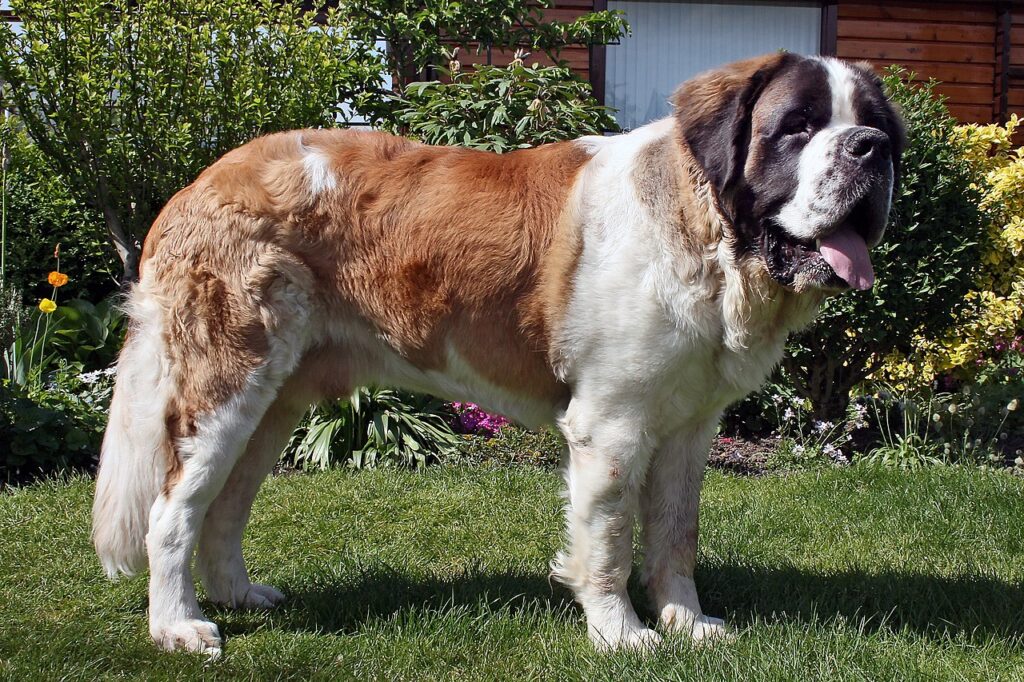
Saint Bernards are solid and enormous dogs with a long history of myth and folklore. Although it is conventional wisdom that the dog initially appeared at a monastery hospice in the Swiss Mountains in the 11th century, its earliest confirmed appearance there—or anyplace else—likely took place approximately 600 years later.
The first monastery dogs, according to experts, were kept as watchdogs. But it wasn’t long before their capacity to save lives became known. Saints were credited with saving well over 2,000 lives throughout the following three centuries.
Saint Bernards are calm, affectionate dogs. Their natural friendliness will probably outweigh a stranger’s initial reluctance to approach such a giant dog. However, Saint Bernard’s acts just as quickly to defend family members they perceive to be in danger.
Saints are excellent for families with well-behaved kids since they are so kind, amiable, and tolerant. Saints are said to be incredibly patient and understanding and take special care not to harm children. Nothing makes them happier than spending time with the family. While, on the other hand, if this dog feels left out of the fun, he might sulk.
Due to the size of the adult Saint, training is essential, and the earlier, the better. The breed has a reputation for being stubborn occasionally. Nonetheless, a Saint’s natural desire to please others will usually balance out any tenacity once he learns what is expected of him.
7. Bloodhound
The bloodhound is a kind, patient, noble, and mannered creature. He is noted for being very patient with young children who clamber all over him. Also, he generally gets along with other animals nicely.
But, strong currents of tenacity and independence are hidden beneath this polite exterior. A bloodhound has an independent mentality and prefers to act on his own rather than following instructions from his owner. This instinct is especially present if the dog has picked up an intriguing scent; in such case, he will be steadfast in pursuing the trail as far as it will take him.
Bloodhounds can make excellent canine companions, but they can also be challenging to train. They mature rather slowly; they enter puberty at around one year and don’t fully mature until at least two. The bloodhound is likely to be loud, clumsy, curious about any intriguing scent, and reckless about eating anything that smells intriguing during that adolescent stage. This propensity to eat includes things like towels, batteries, car seats, and TV remote controls that aren’t appropriate, necessitating pricey post-tasting surgery to remove them.
Due to his prodigious drooling ability and long jowls, this dog can hurl his drool up to 20 feet out with a swift movement of his head. The bloodhound’s independence and aggression can make training difficult. You’ll need to be patient and persistent to teach him fundamental manners.
How to Take Care of Your Giant Fur Friends
While giant breed dogs require special care, they also have many basic health needs in common with other breeds. You must adhere to these fundamental guidelines to provide your dog with the best possible healthcare.
1. Veterinary Services
Any dog breed needs primary vet care first. Vet checkups are required even if your dog is healthy. Like people, dogs require immunizations, yearly examinations, and preventive care. Your vet will also fit your dog’s teeth and toes to ensure his wellness.
- Bloodwork establishes a baseline and checks for sickness causes. Your vet will run bloodwork as part of your dog’s annual wellness exam to establish a baseline of blood indicators while he is healthy. Before prescribing heartworm preventative, your vet will do a heartworm test.
- Prevent heartworm, fleas, and ticks. Flea and tick preventatives protect your dog from flea-related disorders, including anemia, worms, and tick-borne infections like Lyme disease. Heartworm prevention protects your dog from a parasitic worm in the heart’s arteries. Untreated heartworm disease can kill dogs. Treatment can kill the dog; therefore, prevention is vital.
- Regular dental checkup. Even dogs need dental care. Infected gums and damaged teeth allow bacteria to enter the bloodstream, causing heart, liver, and kidney problems.
2. Grooming
Grooming is another necessity that all dogs have in common. Some dogs need little grooming, but others do. Short-haired breeds need weekly brushing and an occasional dog spa Waunakee. On the other hand, long-haired dogs require daily grooming and weekly baths to keep your dog clean and odor-free.
Grooming keeps your dog’s coat smooth, healthy, and free of matting and tangles. Moreover, your dog may experience discomfort or even suffering from matted fur, which also traps dirt and bacteria that can cause skin diseases. Frequent combing and brushing can keep the coat shiny and healthy by distributing natural oils throughout the coat and preventing mats from forming.
In order to reduce shedding and allergies in both humans and dogs, grooming works to remove loose fur and dead skin cells from your dog’s coat.
Regular nail trimming helps your dog – and you, if you have a 100-pound lap dog to avoid discomfort for you and your dog.
3. Proper Diet
Like humans, dogs need good nourishment to remain healthy. Your dog needs great nutrition, small or large. Choose dog diets with entire protein sources like beef, chicken, fish, and others. Avoid cheap food because this will cause your dog to suffer. Chicken by-product meal, maize meal gluten, and similar ingredients are bottom-of-the-barrel ingredients. These components aren’t safe for humans; therefore, they’re utilized in cheap dog food. Dogs shouldn’t eat table food. This will make your dog constantly beg and not eat its regular meal. Table leftovers can cause weight gain and digestive issues in dogs. Only give your dog food recommended by your vets.
A dog’s diet should be customized to meet its specific needs based on variables like age, breed, size, and amount of physical activity. For instance, puppies and adult dogs need varying ratios of nutrients, and senior dogs may need an entirely different diet to meet their changing nutritional requirements.
It is crucial to provide your dog with a high-quality diet that is nutritionally balanced and has all the vitamins, minerals, and other elements that your dog requires. Due to health reasons like food allergies or sensitivities, certain dogs may also need specific diets.
It’s crucial to always give your dog access to fresh, clean water in addition to feeding them a balanced diet. Maintaining a healthy body temperature, helping with digestion, and preventing urinary tract infections all depend on adequate water.
4. Proper Exercise
Research your dog’s breed and ask your vet about exercise.If your dog is suffering from an ACL injury, it can still join you for a walk because there is an ACL brace for dogs available at Hero Braces. Many assume larger dogs need more practice, but that’s not necessarily true. For example, Old English Mastiffs are couch potatoes who need little to no activity. Due to how giant breeds’ bones and joints develop, exercising must be done with care. According to Dr. Jerry Klein, Chief Veterinary Officer of the American Kennel Club, huge and enormous breeds’ growth plates fuse later than smaller dogs. Large-breed puppies should not run or jump unless their bone growth has closed. Dr. Klein says, “Excessive, persistent, percussive damage, such as in organized running or jogging on hard surfaces like concrete or asphalt, could alter the growth plates and impair large dogs’ developing joints.” This implies giant breeds’ training for specific AKC sports, including agility, should be modified until their growth plates fuse. Ask your vet about your dog’s particular needs before participating in running and leaping activities.
5. Providing Training for Your Large-Breed Dog
Large-breed dogs need indoor and outdoor manners. They won’t always realize their size as they grow. The sooner you begin training, the better. Discourage roughhousing that could lead to aggressiveness. Even though they’re friendly, teaching your dog to be careful with children and other dogs early will prevent them from being too harsh. Use calm speech and motions with your huge dog. This can help your dog grow up well-behaved.
With the proper training, dogs can develop positive habits, form bonds with their owners, and live significantly better. Moreover, training can help prevent issues with behavior that can frustrate and worry both the dog and its owner, such as destructive chewing, excessive barking, and aggression.
Basic obedience commands like “sit,” “stay,” and “come” can be introduced to dogs as young as puppyhood to start training them. As the dog matures, leash walking, socializing with humans and other dogs, and specialized training for particular hobbies like agility or scent work can all be introduced.
Dogs can benefit greatly from cerebral stimulation through training. Dogs are sophisticated creatures that benefit equally from mental and physical activity. Training activities can challenge dogs and help them avoid boredom and destructive behavior.
Professional dog trainers are always available if you need their assistance. Puppy classes are another option for teaching your dog.
Final Advice!
Large dogs provide a tremendous deal of safety and affection. Every single dog, no matter how silly-looking or fluffy, is a joy to behold. Even more, reasons to adore these pups are provided by their sheer size. However, high height and weight entail enormous responsibilities. Big canines require a lot of self-confidence and a solid character to deal with daily. You need to prepare for this role by doing some research first. Getting a dog, no matter what size, is a significant commitment. Many shelters and breeders are eager to assist you in choosing a puppy or an older dog that will fit into your family’s lifestyle. It’s essential to know the personality traits and habits of the breeds or mixtures of species you are contemplating,” Flaim says. The importance of selecting the correct dog breeder cannot be overstated.” Flaim suggests consulting a professional dog trainer or behaviorist to help narrow your options and find the ideal fur member for you and your family.

